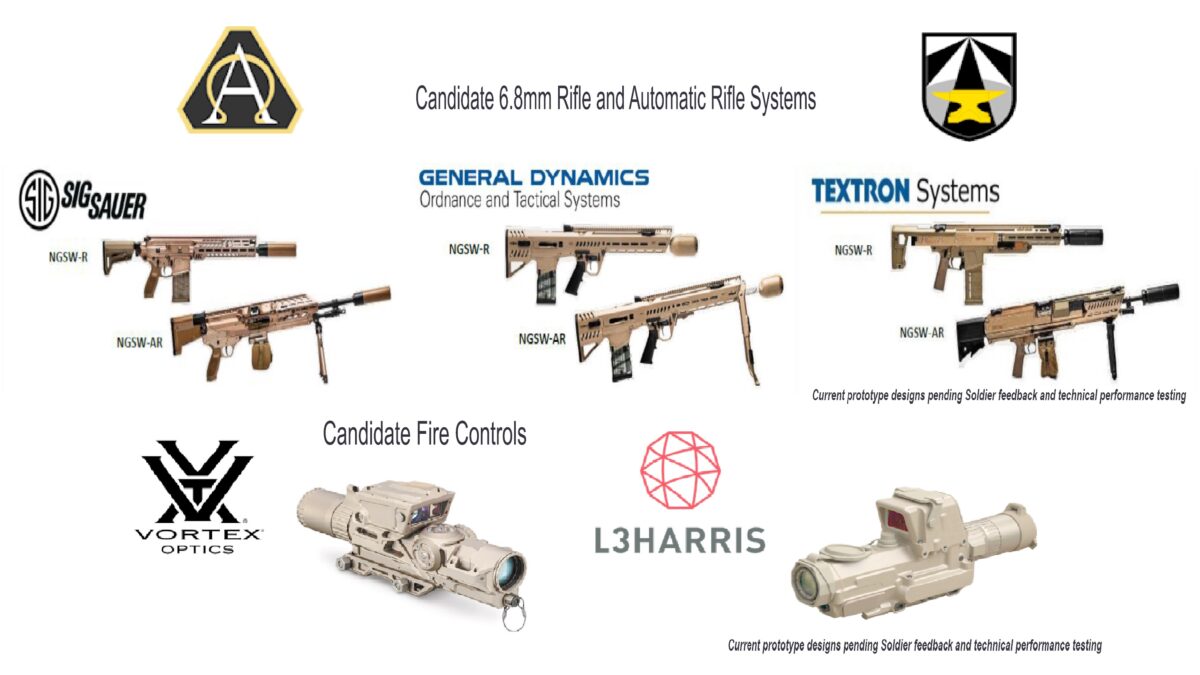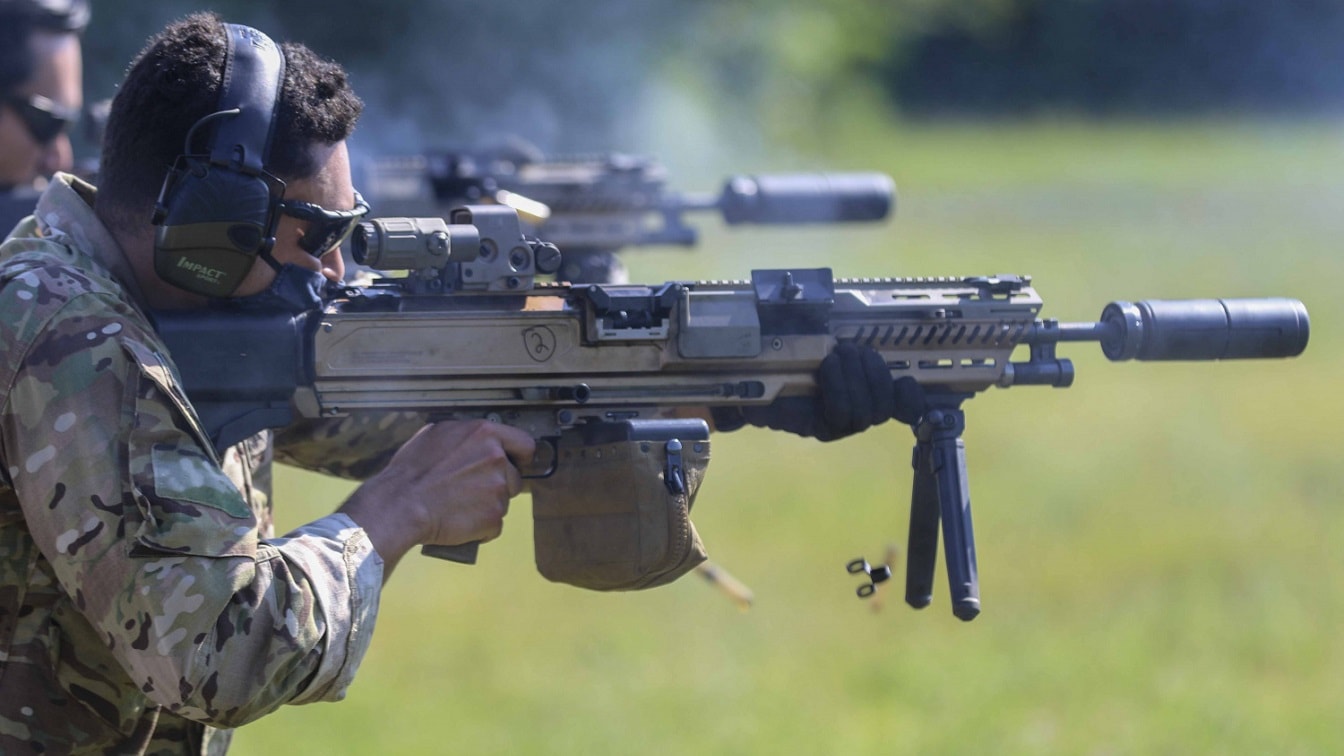New Optics System Chosen for Army’s Next Generation Squad Weapon: The US Army is getting two new weapons to replace the M4 Carbine and the M249 Squad Automatic Weapon – but first the optics had to be picked.
Known as a fire control system, the award goes to Vortex Optics for up to $2.7 billion over ten years. Vortex Optics is to deliver 250,000 XM157 fire control systems to the Army for the Next Generation Squad Weapon program (NGSW), the branch announced on January 7. Vortex Optics subsidiary Sheltered Wings won the deal over L3Harris Technologies.
Below is a rundown on the latest development for everything that is NGSW, from an onboard computer, a new caliber of bullet to the top entries to land this big US military contract:
Onboard Computer on the Rifle and Automatic Rifle
The new optic is called a system because it serves as an “onboard computer” with numerous features – from a laser rangefinder to a ballistic calculator with a compass – to visible and infrared aiming lasers. The Close Combat Optic, the Rifle Combat Optic, and the Machine Gun Optic will be phased out.
The optical system will be on top of the new NGSW– a contract that has not been awarded yet, but it should be announced in the fall of 2022. The original competitors for these weapons were Textron Systems, SIG Sauer, and General Dynamics. Textron, according to the Army Times in December, “is no longer part of the competition,” and General Dynamics allowed LoneStar Future Weapons, which is now working with Beretta, to take over the program.
NGSW Gets a New Caliber of Ammunition
The new ammunition has been announced. The Army is going with the 6.8mm round. This is in between the 5.56mm and 7.62mm NATO-standard rifle cartridges. The 6.8mm caliber is supposed to provide increased range, accuracy, and power. The ammunition is also lighter enabling soldiers to carry more of a combat load.
The Sig Sauer NGSW Entrant Looks Familiar
SIG Sauer’s automatic rifle and rifle designs for the Army’s NGSW contract are more familiar in appearance. Their rifle entrant has a traditional, magazine-fed design with a collapsible stock that allows for more portability. A rear and side charging handle and ambidextrous controls are included.
SIG’s automatic rifle entrant is belt-fed with a disintegrating link belt. SIG claims that their automatic rifle design is 40 percent lighter compared to comparable automatic rifles.
A NGSW Bullpup Would Be Different
Unlike SIG Sauer’s NGSW prototypes, both of General Dynamics/LoneStar/Beretta’s two NGSW entrants are bullpup designs, with magazines loaded behind the trigger. Traditional rifles place the trigger behind the magazine and the receiver. A bullpup design would be quite a departure for the Army. The Chinese, British, and French use bullpup weapons, but they may be unfamiliar to many Army soldiers.
The bullpup is usually shorter with better weight distribution to improve balance. The bullpup often does not lose ballistic capability. This is great for close-quarters combat and for airborne or air assault soldiers who typically prefer a weapon with a more compact design. Bullpups allow soldiers to easily carry them while running or jumping. Some bullpup rifle designs have less kick and can reduce the muzzle rise during automatic fire. The bullpup can also have extra muzzle velocity.
However, many bullpup designs are not good for left-handed shooters as the ejection of the cartridge is better for righties. Also, the physical process of re-loading is different, and some soldiers may need extra training to re-load quickly. Fixing malfunctions takes some getting used to as well.
I could see a bullpup as a choice for Army Special Forces in an airborne operation that calls for say – a hostage rescue in an enemy-controlled building. This makes sense. But for every combat soldier in the Army? That seems to be a stretch. It would be a big change for many soldiers.

NGSW. Image Credit: US Military.
Does the USArmy Love Sig Sauer that Much?
But will SIG Sauer be the winner of the NGSW copmpetition?
They already won the M17/18 pistol contract for the replacement of the M9 Beretta. The manufacturer’s P320 model which the M17 and M18 are based on has spawned three lawsuits for unexplained discharges. The Pentagon conducted a 2018 report that claimed the Sig Sauer M17/M18 testing showed some problems, including accidental discharges if the pistol was dropped onto its dovetail and ejecting live bullets. Sig maintains that all issues have been fixed.
Does the US Army really want one manufacturer to supply the pistol, rifle, and automatic rifle? That’s not much competition. To be sure, Colt supplied the M-16 from 1964 until 1988 when the Army changed to a different manufacturer of the weapon. Colt also made the venerable M1911 pistol, so you could say Colt dominated Army firearms for decades.
So, it is coming down to a conventional design versus a bullpup design to be announced later this year. They would both use the 6.8mm round. Also, something new. This competition should create many heated opinions after the winner is chosen. It will be an eight-year contract to make around 120,000 total rifles and machine guns. Let’s hope the Army takes the pros and cons of each entrant very seriously.
Now serving as 1945’s Defense and National Security Editor, Brent M. Eastwood, Ph.D., is the author of Humans, Machines, and Data: Future Trends in Warfare. He is an Emerging Threats expert and former U.S. Army Infantry officer. You can follow him on Twitter @BMEastwood.

